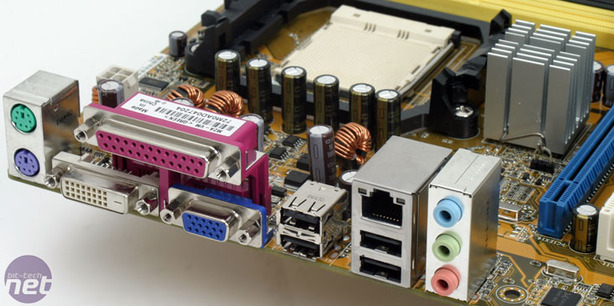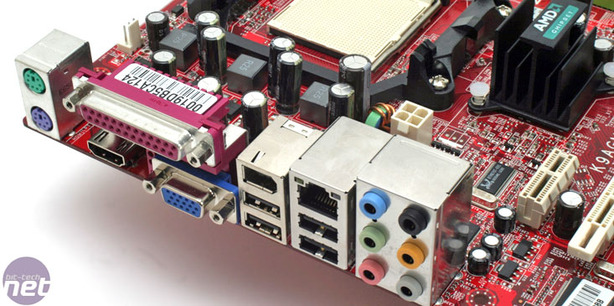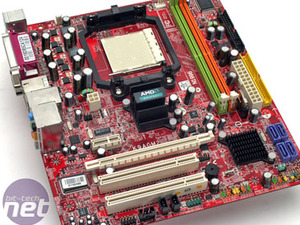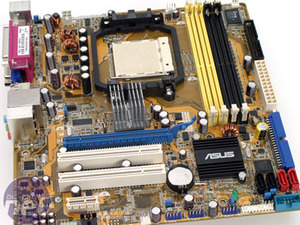AMD 690-series chipsets (Continued)
Despite the fact that sound is processed from the southbridge, and to be included in the HDMI signal it has to be routed to the northbridge and then synchronised before being sent to the display, we were assured by ATI that the drivers are fully capable of not only Avivo post processing but also the necessary synchronising of the audio and video feeds.You can still multi-monitor like you could with the RS480, with two on-board and two from the PCI-Express x16 slot giving you a total of four outputs using SurroundView technology. Obviously, there's no CrossFire support, but you will be able to have oodles of visual real estate from a potentially very small case.
There are two chipset varieties available, 690G and 690V, with 690V offering everything the 690G does except for integrated DVI / HDMI support. The 690V version uses a cut down version of the X1250 graphics chip that is dubbed the Radeon X1200; this lacks the integrated DVI / HDMI functionality.
The M690G is specifically for laptops and it offers local frame buffer support, meaning that the system can go into a deeper sleep state without having to refresh all of the memory. At a quoted 7W, this makes such a direct translation into notebooks simple, and should mean more manufacturers take up this integrated chipset for use in thin and light, or simply cheaper solutions that are Vista capable.
The cost per board is reasonably low due to the fact the chipset is inexpensive to buy. This is helped by the fact the RS690 is built on an 80nm process, having a footprint of merely 50mm². Combined, this allows AMD to manufacture lots of cores per wafer and is exceptionally low power so that it only requires a small heatsink. This is in comparison to the behemoths that we've seen on more enthusiast-orientated chipsets from Intel and Nvidia.
At least twelve manufacturers have committed to making 690 based motherboards and systems, more than any previous integrated chipset launched by ATI. This should provide a greater availability, choice and competitive marketplace.
AMD 690G Motherboards
We received two motherboards from Asus (M2A-VM) and MSI (K9AGM2), both show two different types of approaches the chipset can be used for. The Asus board is a more cost-concious design that only offers basic high-definition audio and Gigabit Ethernet. In addition, the board has VGA and DVI ports on the rear I/O panel; for those looking for HDMI and / or S/PDIF, you'll need a separate PCI-Express x16 card that should be included in the bundle. However, we're yet to see a final retail version of the M2A-VM.In comparison, the MSI K9AGM2 has on-board HDMI next to the VGA port, six 3.5mm audio jacks, a six-pin Firewire port and more advanced high-definition audio. The other major difference between the two boards is the fact that MSI's 690G board only has two memory slots instead of the four included on Asus' board.
Both boards employ tiny passive heatsinks for both north and south bridges, and they're both based around an mATX form factor. This should be common across other 690-based boards if the early samples we've seen from a range of manufacturers are anything to go by.



MSI MPG Velox 100R Chassis Review
October 14 2021 | 15:04











Want to comment? Please log in.